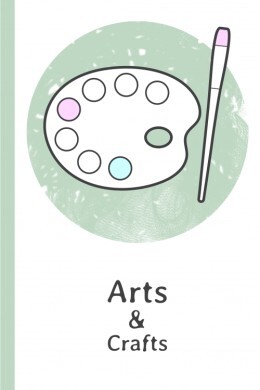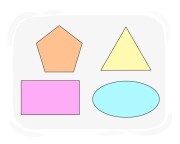the distribution of visual weight or elements within a composition, resulting in a sense of harmony and equilibrium
Arts and Crafts - Art Elements and Principles
Here you will learn some English words related to art elements and principles such as "texture", "perspective", and "theme".
review
flashcard
spelling
quiz

a long narrow mark on a surface
the outer form or edges of something or someone
the shape of someone or something, especially the outline
a quality such as red, green, blue, yellow, etc. that we see when we look at something
an area that is empty or unoccupied and therefore available for use
the degree of lightness or darkness of a color, which helps create contrast, depth, and dimension in visual art
the different techniques and methods artists use to create marks on a surface and it can range from precise and controlled to loose and expressive, conveying different emotions and meanings
the physical properties and qualities of materials used in the creation of art, including their texture, color, weight, transparency, and other characteristics
the attribute of color that distinguishes one color from another based on its position in the color spectrum or wheel
the quality or degree of being bright in color
the purity or vividness of a color, representing the degree to which it is free from white or gray
a subtle variation in the quality or shade of a color
a basic element of design that refers to a small, clearly defined location or mark on a surface
a typically repeating arrangement of shapes, colors, etc., regularly done as a design on a surface
the artistic arrangement of people, objects, or elements in a painting or image
the quality of oneness, coherence, and harmony in a work of art, achieved through the careful integration and balance of its various elements and principles of design
a pleasing combination of things in a way that forms a coherent whole
the technique of representing a two-dimensional object in a way that gives the right impression of distance by drawing objects and people that are farther in a smaller size
the state of having characteristics, appearances, qualities, etc. that are very alike but not the same
differences in color or in brightness and darkness that an artist uses in a painting or photograph to create a special effect
a principle of design that refers to the visual flow and direction of a composition, created through the repetition and continuation of lines, shapes, colors, or other elements
a principle of design that refers to the use of the same or similar elements multiple times in a composition
a visual or design principle involving repetition or alternation of elements to create movement or flow
the quality of having two halves that are exactly the same, which are separated by an axis
(geometry) a lack of symmetry or equivalence in shape or size between the two sides or parts of something
a principle of design that refers to the arrangement and organization of elements in a composition to create a sense of importance, emphasis, or dominance
a principle of design that refers to the visual weight or emphasis given to certain elements in a composition
special importance given to something over other items or considerations
a principle of design that refers to the size of elements in a composition relative to one another or to the overall size of the composition itself
a principle of design that refers to the relationship of the size, shape, and quantity of different elements in a composition














